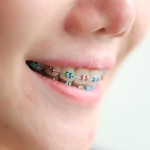
White spot lesions (WSLs) are an early but reversible stage in caries development. They are often seen around orthodontic brackets and are a common adverse side effect of orthodontic treatment with incidence being reported to be between 32-74%.
The aim of this review was to assess the effectiveness of interventions to treat WSL following orthodontic treatment.
Methods
Searches were conducted in the Cochrane Library, Medline, Virtual Health Library, Scopus, ISI Web of Knowledge, Clinical trials.gov, Google Scholar and ISRCTN registry databases. Parallel or split-mouth randomised and quasi-randomised prospective controlled trials comparing any intervention for WSLs that were induced from a previous orthodontic treatment to a control/placebo group were considered. Two reviewers extracted data with risk of bias being assessed using the Cochrane risk of bias tool. Random-effects meta-analyses of mean differences (MDs), standardized mean differences (SMDs), and odds ratios (ORs), including their 95% confidence intervals (CIs) were performed,
Results
- 20 trials (17 parallel studies, 3 cluster RCTs) involving a total of 942 patients were included.
- Sample sizes ranged from 11-115.
- 11 trials were at high risk of bias, 1 at low risk the remainder unclear.
- A wide variety of interventions were used including CPP–ACP creams (with or without fluoride), external tooth bleaching, low- or high- concentration fluoride materials (in the form of lm, gel, mouthrinse, toothpaste, or varnish), resin infiltration, miswak chewing sticks, or bioactive glass toothpaste.
- Follow up periods ranged from 2 weeks – 6.5 months.
- The overall quality of evidence was judged as low to moderate for the outcomes of lesion area lesion fluorescence and clinical assessment of the lesion’s improvement.
- Individual studies found statistically significant overall improvements between intervention and control groups for various optical outcomes of tooth colour and clinical evaluation of WSLs.
- No adverse effects of interventions for post- orthodontic WSLs, apart from a single case of nausea after a patient swallowed a small portion of a fluoride varnish
- monthly fluoride varnish was the best supplement to improve WSLs in terms of
- lesion area; MD = -0.80 mm2; (95%CI = -1.10, -0.50 mm2)) 1 trial.
- enamel fluorescence ; SMD = -0.92; (95%CI = -1.32, -0.52) 3 trials
- WSL treatment did not provide a considerable improvement in their clinical evaluation; OR = 0.97 (95% CI = 0.60, 1.56) 3trials, with imprecision due to small sample size being the main limitation of existing evidence.
Conclusions
The authors concluded:-
Based on the available overall evidence, current interventions for WSL, supplemental to daily toothbrushing with a fluoride dentifrice, seem to have only a modest, and possibly clinically irrelevant, added value to the improvement of WSLs (low-quality evidence). Among the available treatments, the monthly use of a 22 600-ppm fluoride varnish or a 5% sodium fluoride lm seem to be the best viable protocols to augment daily use of a fluoride dentifrice in terms of both reducing the WSL area and to increasing its aesthetic appearance (fluorescence; high quality of evidence). The treatment effects of a bioactive glass toothpaste or a CPP–ACP cream with fluoride seem promising, but high uncertainty exists due to the risk of bias and therefore need to be supported by high-quality evidence before they can be recommended.
Comments
The question of what is the best method of treatment post-orthodontic WSLs was assessed by the 2013 Cochrane review update by Benson et al (Dental Elf – 27th Jan 2014). They only included 3 RCTs findings some moderate evidence that 6 weekly fluoride varnish during orthodontic treatment reduced WSLs, however this was based on a single study. Another review of this question by Sonesson et al was published earlier this year (Dental Elf – 12th Apr 2016). The Sonesson review included just 7 studies although they only included studies involving 20 or more patients a restriction that the current review did not use. While the reviews suggest a beneficial effect from topical fluoride interventions the available evidence is of limited quality with many of the available studies being small and of short duration. As the authors of this current review note further well conducted high quality trials are required to assess the efficacy of the interventions currently in use.
Links
Primary paper
Höchli D, Hersberger-Zurfluh M, Papageorgiou SN, Eliades T. Interventions for orthodontically induced white spot lesions: a systematic review and meta-analysis. Eur J Orthod. 2016 Oct 17. pii: cjw065. [Epub ahead of print] Review. PubMed PMID: 27907894.
Other references
Original review protocol on PROSPERO
Dental Elf – 12th Apr 2016
Post-orthodontic white spot lesions – lack of reliable evidence for management strategies
Dental Elf – 27th Jan 2014
